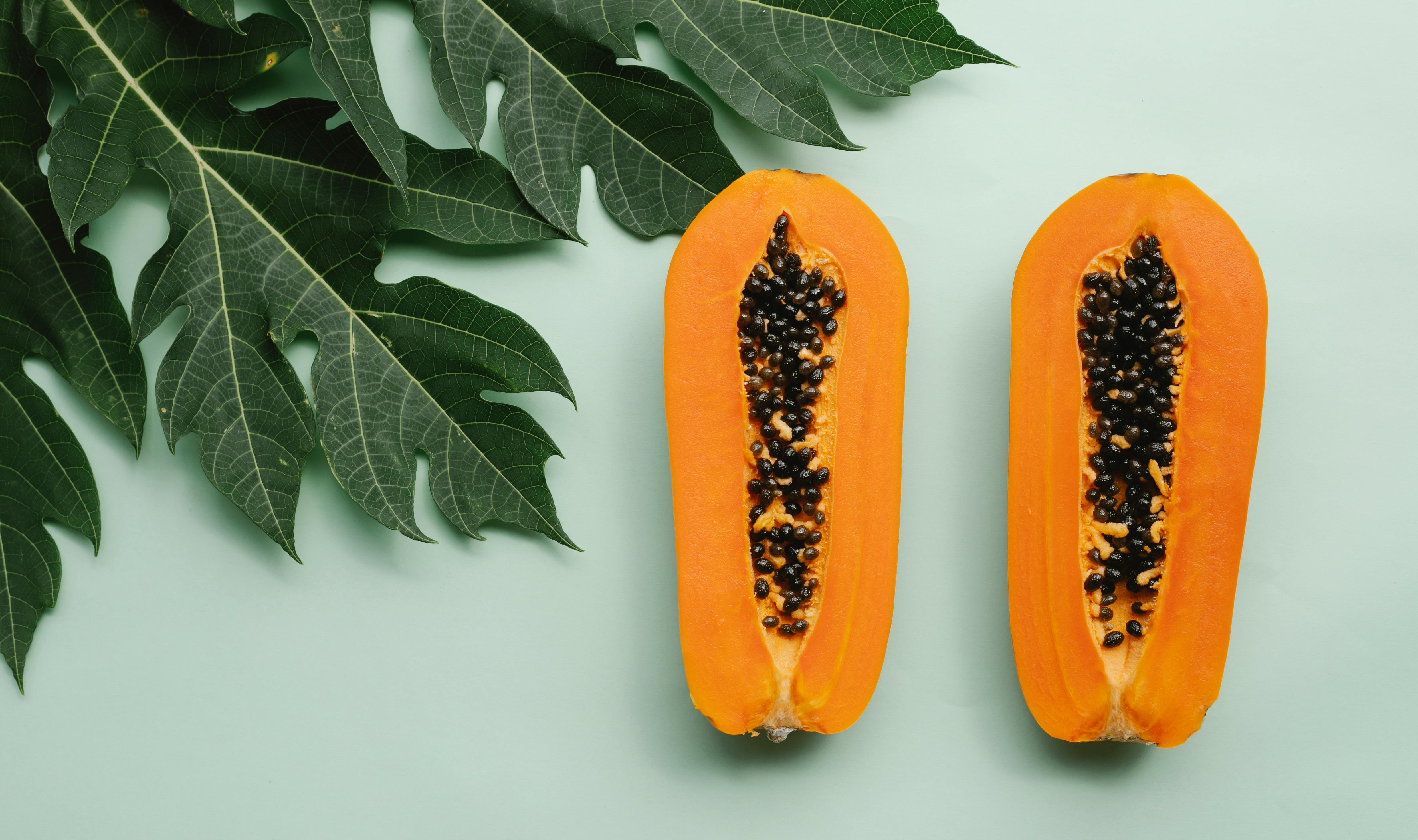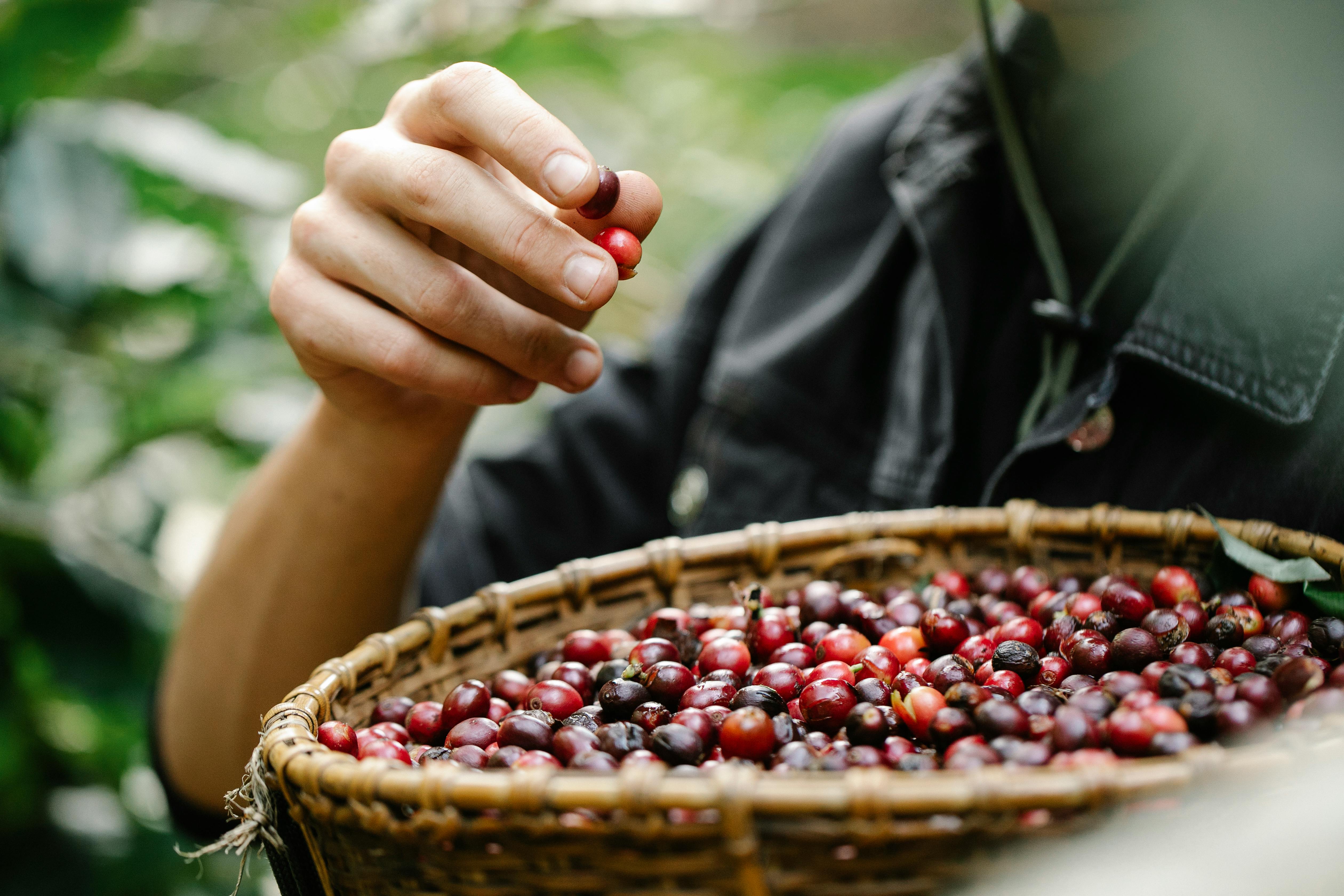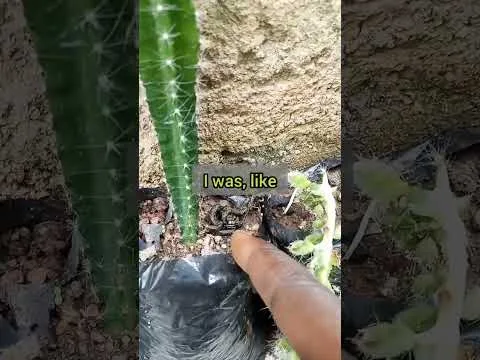Dragon fruit plants are a unique and exotic species of cactus native to Central and South America. They produce beautiful flowers and tasty fruit, but sometimes can be difficult to keep alive in our homes. If you’ve noticed that your dragon fruit plant is looking unhealthy or the fruit is disappearing, it could be due to an infestation of some kind. In this article, we’ll discuss what might be eating your dragon fruit plant and how to get rid of the pests.Eating your dragon fruit plant could be caused by a number of different pests, including ants, caterpillars, beetles, and mealybugs. It is important to identify the pest that is eating your plant in order to properly treat it. To do this, you should inspect the plant (including its leaves and stems) for any signs of damage or insects. If you find any signs of damage or insects, you should try to remove them from the plant with a cotton swab dipped in soapy water. You can also apply an insecticide to the affected area to help control the pest population.
Common Garden Pests That Eat Dragon Fruit Plants
Dragon fruit plants are native to Central and South America and have become popular in many gardens for their sweet, juicy fruit. While these plants are generally hardy and easy to care for, they can be susceptible to pests. Common garden pests that feed on dragon fruit plants include aphids, mealybugs, scale insects, whiteflies, caterpillars, mites, nematodes, slugs, and snails.
Aphids are small insects that feed on the sap of young shoots and leaves of dragon fruit plants. They suck the plant’s fluids which can cause the plant to become stunted or distorted. To get rid of them, you can spray the plant with an insecticidal soap or neem oil solution. Mealybugs also feed on dragon fruit plants by sucking the sap from leaves and stems. They often form colonies around leaf axils or at base of stems and can cause yellowing or wilting of leaves if left unchecked. To eliminate them you can use insecticidal soaps or horticultural oil sprays.
Scale insects are small insects that feed on dragon fruit plants by sucking the sap from leaves and stems. They attach themselves to the plant’s surface using a waxy secretion which makes them difficult to remove with your hands. To get rid of them you can spray insecticidal soaps or neem oil solutions directly onto affected areas of the plant. Whiteflies are another type of pest that feeds on dragon fruit plants by sucking the sap from leaves and stems causing yellowing or wilting of leaves if left unchecked. To remove them you can use insecticidal soaps or horticultural oil sprays as well as sticky traps which will trap adult whiteflies before they lay eggs on your plant.
Caterpillars, mites, nematodes, slugs, and snails all cause damage to dragon fruit plants by eating away at its foliage and fruits. Caterpillars can be removed by handpicking while mites may require specialized treatments like horticultural oils or insecticidal soaps applied directly onto affected areas of the plant for control purposes. Nematodes feed on roots causing root rot while slugs and snails damage foliage directly with their rasping mouthparts so it is important to monitor your plants regularly for signs of these pests in order to keep them under control.
By keeping a close eye on your dragon fruit plants for signs of these common garden pests you will be able to take action quickly should an infestation occur in order to protect your precious harvest!
Step 1: Observe and Identify
The first step when it comes to identifying a pest is to observe and identify the type of pest present in the environment. This can be done by looking at physical characteristics such as shape, color, size, or behavior. It is important to take note of any signs or clues that may help with identification, such as droppings, damage to plants or furniture, or the presence of eggs. Once the type of pest has been identified, it will become easier to determine what steps need to be taken in order to get rid of it.
Step 2: Determine the Level of Infestation
Once the type of pest has been identified, it is important to determine the extent and level of infestation. This can be done by assessing how widespread the pests are in an area as well as how many are present. If the infestation is widespread and there are a large number of pests present, then more aggressive measures may need to be taken in order to eradicate them.
Step 3: Choose an Appropriate Control Method
The next step is to choose an appropriate control method for getting rid of the pests. Depending on the type and level of infestation, different control methods may be necessary in order to ensure that all pests are eliminated. Some common methods include traps, baits, sprays, dusts, and chemical treatments. It is important to choose a method that will effectively eliminate all pests while also being safe for humans and pets.
Step 4: Implement Control Measures
Once an appropriate control method has been chosen, it is time to implement these measures in order to get rid of all pests from an area. This can involve setting traps or laying bait around areas where pests have been spotted as well as using sprays or dusts on surfaces where they may have come into contact with humans or pets. It is also important to keep any affected areas clean and free from clutter so that new pests do not move in.
Step 5: Monitor Results
Finally, once control measures have been implemented it is important to monitor their effectiveness over time in order ensure that all pests have been eliminated from an area. Regular inspections should be carried out so that any new infestations can be quickly identified and dealt with before they become a bigger problem.
Natural Ways To Get Rid Of The Pest
Pests can be a nuisance and can cause extensive damage to property. Fortunately, there are several natural ways to get rid of unwanted pests. One of the most effective natural pest control methods is using plants that help repel unwanted pests. Certain plants, such as mint and lavender, produce odors that pests cannot stand. Garlic cloves and cayenne pepper can also be used to create a natural barrier around the home to keep away certain pests.
Another effective natural pest control measure is introducing predators into the environment. For example, small birds or bats feed on insects and can help keep them away from your home. Ladybugs are another beneficial insect that feeds on aphids, mites, and other pests that can damage gardens and landscapes.
A third way to naturally control pests is through the use of traps. Traps are designed to lure in and capture certain types of insects or rodents without causing harm to other animals or humans. Glue traps are one type of trap that is designed to catch insects like ants or cockroaches while live traps capture larger animals like mice or rats without killing them so they can be released back into their natural environment.
Finally, some people choose to use natural pesticides as a way to get rid of unwanted pests. Natural pesticides are made from plant extracts and essential oils that have insecticidal properties without causing harm to other species or the environment. Natural pesticides can be used indoors and outdoors depending on the type of pest being targeted.
Overall, there are many natural ways to get rid of unwanted pests without having to resort to harsh chemicals or poisons that could be harmful for humans, animals, or the environment. With some research and knowledge about different types of plants, predators, traps, and pesticides available, it’s possible for anyone to safely get rid of pesky pests in an environmentally friendly way.
Chemical Solutions To Control The Pest
Pests have become a major problem for homeowners, businesses and farmers. There are a variety of chemical solutions available to help control pests. These chemicals can be used in a variety of ways, from sprays and baits to dusts and granules. They are designed to target specific pests, such as ants, termites, fleas and ticks. Chemical solutions can also be used to prevent pests from entering your home or business.
When using chemical solutions to control pests, it is important to read the labels on the products carefully and follow all instructions closely. This will help ensure that the product is used correctly and safely. It is also important to wear protective clothing when applying the chemicals and keep pets and children away from the area where they are being applied.
Another important factor to consider when using chemical solutions is the type of pest you are trying to control. Different types of pests require different types of chemicals, so it is important to identify what type of pest you have before selecting a product. Some products may not be effective against certain types of pests or can even cause harm if not applied correctly.
Finally, it is important to remember that chemical solutions should always be used as a last resort when controlling pests. Before turning to these products, it is wise to look into alternative methods such as traps or natural predators that may be more effective in controlling an infestation without the use of chemicals. By taking these steps, it will help ensure that your pest problem can be solved without putting your family or pets at risk of harm from toxic chemicals.

Signs Of Damage On Dragon Fruit Plants
Dragon fruits are beautiful and unique plants that can be grown in the home garden. However, they are susceptible to various diseases and pests that can cause damage to the plant. Some common signs of damage on dragon fruit plants include wilting leaves, discolored foliage, stunted growth, and spots or lesions on the fruit. It is important to monitor your dragon fruit plants closely for signs of damage and take action to treat any problems as soon as possible.
Wilting leaves are one of the most common signs of damage on dragon fruit plants. Wilting leaves typically occur when a plant is not getting enough water or nutrients from the soil or when there is too much heat. If you notice wilting leaves, it is important to check the soil moisture levels and adjust your watering schedule accordingly. Additionally, it may be beneficial to add a balanced fertilizer to your soil to ensure that your plant is getting all of the nutrients it needs.
Discolored foliage can also indicate a problem with your dragon fruit plant. Leaves may become yellow or brown due to nutrient deficiencies in the soil or due to pests such as aphids or spider mites. If you notice discoloration on your dragon fruit plant’s foliage, you should take steps to address the issue immediately by applying an appropriate pesticide or fertilizer.
Stunted growth is another sign of damage on dragon fruit plants that should not be ignored. Stunted growth usually occurs when a plant does not have access to enough water or nutrients for healthy growth. If you notice stunted growth in your dragon fruit plants, check the soil moisture levels and adjust your watering schedule accordingly. Additionally, adding a balanced fertilizer may help promote healthy growth.
Finally, spots or lesions on dragon fruits can also indicate damage caused by pests or disease. If you notice spots or lesions on your dragon fruits, it’s important to take steps to address the issue immediately by applying an appropriate pesticide or fungicide according to label instructions. Additionally, it’s important to monitor your plants closely for further signs of damage and take action if necessary.
Health Benefits Of Growing Dragon Fruit Plants
Dragon fruit plants have a lot of health benefits that make them an appealing option for those looking to improve their overall wellness. The plant is loaded with antioxidants, vitamins, minerals, and fiber. It can also help regulate blood sugar levels and reduce inflammation. Dragon fruit also contains powerful compounds that can help fight off disease-causing bacteria and viruses. Additionally, dragon fruit has been linked to improved cardiovascular health, weight loss, and improved digestion.
Dragon fruit is a great source of Vitamin C, an important nutrient that helps support the immune system. It also contains B vitamins which are essential for healthy skin, hair, and nails. It is also high in fiber which helps promote regularity and keep the digestive system running smoothly. The plant is also a good source of potassium which can help reduce blood pressure and lower the risk of stroke and heart attack.
Dragon fruit is packed with antioxidants that can help protect against cellular damage caused by free radicals. The plant is rich in carotenoids such as beta-carotene which are important for eye health. The antioxidants in dragon fruit can help protect against certain cancers such as breast cancer and prostate cancer.
Dragon fruit has anti-inflammatory properties that can help reduce inflammation in joints and muscles. It has been found to be effective in treating conditions such as arthritis, gout, and tendonitis. The plant is also rich in magnesium which helps relax muscles and relieve cramps or spasms.
Finally, dragon fruit has been linked to improved mental clarity due to its high content of essential fatty acids such as Omega-3s which are important for brain health. Eating this delicious tropical fruit regularly may improve moods by helping increase serotonin levels in the brain.
Overall, dragon fruit plants offer numerous health benefits that make them an excellent choice for those looking to improve their overall wellness. They are rich in essential vitamins and minerals as well as powerful antioxidants that can help protect against disease-causing bacteria and viruses while promoting better cardiovascular health, improved digestion, weight loss, mental clarity, joint pain relief, and reduced inflammation.
Prevent Further Damage To Dragon Fruit Plants
Dragon fruit plants can be damaged by a variety of environmental factors, including excessive heat, cold, wind, and drought. In order to prevent further damage to dragon fruit plants, it is important to ensure that the environment is suitable for the species. This includes providing adequate shade during hot weather and protection from strong winds. Additionally, proper watering is essential and soil should be kept moist but not saturated. Fertilizing the plant with a balanced fertilizer at least once a month can also help promote healthy growth. Finally, pests should be controlled with natural methods such as hand-picking or using traps. Regularly checking your plants for signs of disease or pest infestations can also help prevent further damage.
It is also important to provide adequate support for dragon fruit plants as they grow. Support structures such as stakes or trellises can help keep the plant upright and reduce the risk of stem breakage due to wind or heavy fruit production. Pruning regularly will also help keep plants in shape and promote healthy growth. When pruning, it is important to remove any dead or diseased material from the plant in order to prevent further damage.
Finally, dragon fruit plants require plenty of sunlight in order to thrive. Planting them in an area that gets at least 6 hours of direct sunlight per day is ideal. If necessary, shade cloths can be installed during especially hot days in order to protect the plant from excessive heat exposure. With proper care and maintenance, dragon fruit plants can remain healthy and productive for many years.

Conclusion
It is important to be aware of common pests and diseases that can affect your dragon fruit plant. Be sure to take steps to protect your plants and take action when needed. Regularly inspect your plants for signs of damage, and if you notice any, contact a professional to verify what is eating your dragon fruit plant. Taking precautionary measures can help keep your dragon fruit plant healthy and happy for years to come.
Regardless of the cause, it is essential that you take steps to address the issue as soon as possible. If left untreated, the damage done by pests or disease can quickly become out of control, resulting in extensive damage or even death of your dragon fruit plant. In addition, it is important to have a good understanding of the environment in which you are growing your dragon fruit plant in order to determine what measures should be taken in order to protect it from potential problems.
By taking proper precautions and being vigilant about inspecting your dragon fruit plant for signs of damage, you will be able to identify any issues early on and take action before they become too severe. With the right knowledge and care, you can ensure that your dragon fruit plant will thrive for years to come!



